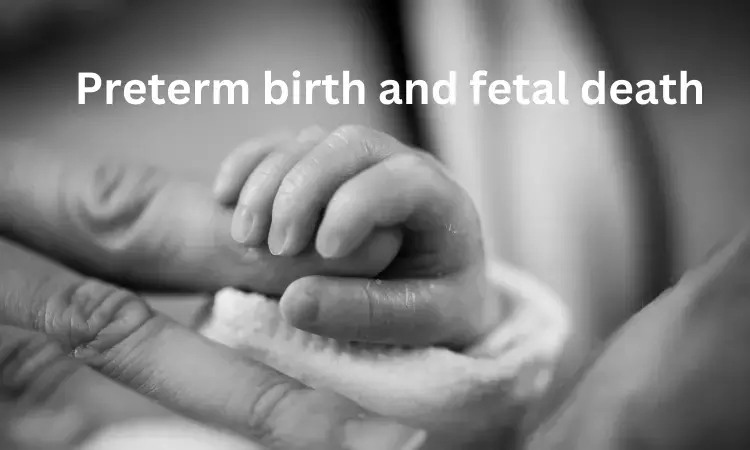- Home
- Medical news & Guidelines
- Anesthesiology
- Cardiology and CTVS
- Critical Care
- Dentistry
- Dermatology
- Diabetes and Endocrinology
- ENT
- Gastroenterology
- Medicine
- Nephrology
- Neurology
- Obstretics-Gynaecology
- Oncology
- Ophthalmology
- Orthopaedics
- Pediatrics-Neonatology
- Psychiatry
- Pulmonology
- Radiology
- Surgery
- Urology
- Laboratory Medicine
- Diet
- Nursing
- Paramedical
- Physiotherapy
- Health news
- Fact Check
- Bone Health Fact Check
- Brain Health Fact Check
- Cancer Related Fact Check
- Child Care Fact Check
- Dental and oral health fact check
- Diabetes and metabolic health fact check
- Diet and Nutrition Fact Check
- Eye and ENT Care Fact Check
- Fitness fact check
- Gut health fact check
- Heart health fact check
- Kidney health fact check
- Medical education fact check
- Men's health fact check
- Respiratory fact check
- Skin and hair care fact check
- Vaccine and Immunization fact check
- Women's health fact check
- AYUSH
- State News
- Andaman and Nicobar Islands
- Andhra Pradesh
- Arunachal Pradesh
- Assam
- Bihar
- Chandigarh
- Chattisgarh
- Dadra and Nagar Haveli
- Daman and Diu
- Delhi
- Goa
- Gujarat
- Haryana
- Himachal Pradesh
- Jammu & Kashmir
- Jharkhand
- Karnataka
- Kerala
- Ladakh
- Lakshadweep
- Madhya Pradesh
- Maharashtra
- Manipur
- Meghalaya
- Mizoram
- Nagaland
- Odisha
- Puducherry
- Punjab
- Rajasthan
- Sikkim
- Tamil Nadu
- Telangana
- Tripura
- Uttar Pradesh
- Uttrakhand
- West Bengal
- Medical Education
- Industry
Cervical Pessary may not Prevent Preterm Birth among individuals with short cervix: JAMA

Preterm birth is a major health concern it contributes to more than 50% of the overall perinatal mortality. Preterm birth has multiple risk factors including cervical incompetence and multiple pregnancy. Different management strategies have been tried to prevent preterm birth, including cervical cerclage.
Short cervix as assessed by transvaginal ultrasound is an established risk factor for preterm birth. Study findings for a cervical pessary to prevent preterm delivery in singleton pregnancies with transvaginal ultrasound evidence of a short cervix have been conflicting.
A recent randomized trial “TOPS” reveals that the rate of preterm birth or fetal death before 37 weeks did not show much difference, preterm delivery or neonatal death occurred in 45.5% of the pessary group compared to 45.6% of the usual care group. Fetal or neonatal/infant death occurred more frequently in those randomized to receive a pessary 13.3% than those 6.8% randomized to receive usual care. The findings of the study are published in JAMA Network.
Researchers performed a multicenter, randomized, unmasked trial comparing a cervical pessary vs usual care from February 2017 through November 5, 2021, at 12 centers in the US. Study participants were nonlaboring individuals with a singleton pregnancy and a transvaginal ultrasound cervical length of 20 mm or less at gestations of 16 weeks 0 days through 23 weeks 6 days. Individuals with a prior spontaneous preterm birth were excluded.
The findings of the study are
• A total of 544 participants (64%) of a planned sample size of 850 were enrolled in the study (mean age, 29.5 years [SD, 6 years]).
• Following the third interim analysis, study recruitment was stopped due to concern for fetal or neonatal/infant death as well as for futility.
• Baseline characteristics were balanced between participants randomized to pessary and those randomized to usual care; 98.9% received vaginal progesterone.
• In an as-randomized analysis, the primary outcome occurred in 127 participants (45.5%) randomized to pessary and 127 (45.6%) randomized to usual care (relative risk, 1.00; 95% CI, 0.83-1.20).
• Fetal or neonatal/infant death occurred in 13.3% of those randomized to receive a pessary and in 6.8% of those randomized to receive usual care (relative risk, 1.94; 95% CI, 1.13-3.32).
Researchers concluded that “Cervical pessary in nonlaboring individuals with a singleton gestation and with a cervical length of 20 mm or less did not decrease the risk of preterm birth and was associated with a higher rate of fetal or neonatal/infant mortality.”
Reference: Hoffman MK, Clifton RG, Biggio JR, et al. Cervical Pessary for Prevention of Preterm Birth in Individuals With a Short Cervix: The TOPS Randomized Clinical Trial. JAMA. 2023;330(4):340–348. doi:10.1001/jama.2023.10812.
MSc. Neuroscience
Niveditha Subramani a MSc. Neuroscience (Faculty of Medicine) graduate from University of Madras, Chennai. Ambitious in Neuro research having worked in motor diseases and neuron apoptosis is interested in more of new upcoming research and their advancement in field of medicine. She has an engrossed skill towards writing and her roles at Medical dialogue include Sr. Content writer. Her news covers new discoveries and updates in field of medicine. She can be reached at editorial@medicaldialogues.in
Dr Kamal Kant Kohli-MBBS, DTCD- a chest specialist with more than 30 years of practice and a flair for writing clinical articles, Dr Kamal Kant Kohli joined Medical Dialogues as a Chief Editor of Medical News. Besides writing articles, as an editor, he proofreads and verifies all the medical content published on Medical Dialogues including those coming from journals, studies,medical conferences,guidelines etc. Email: drkohli@medicaldialogues.in. Contact no. 011-43720751


